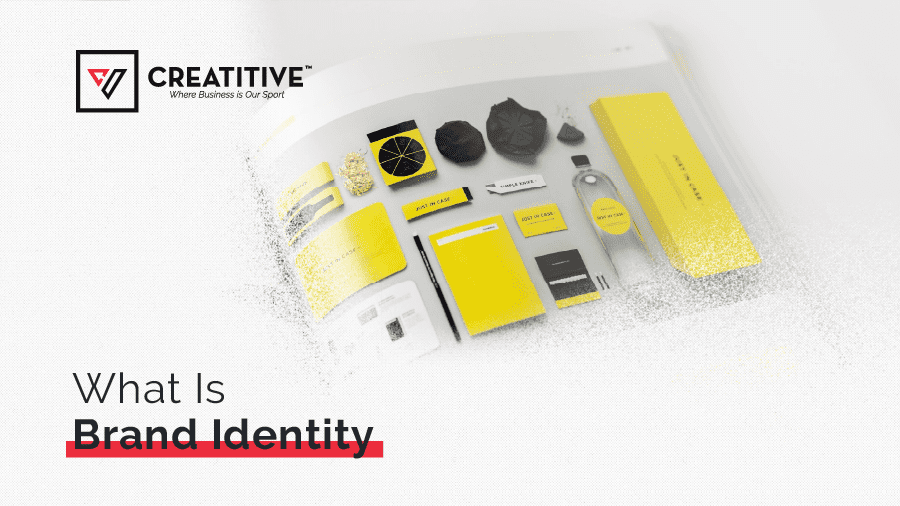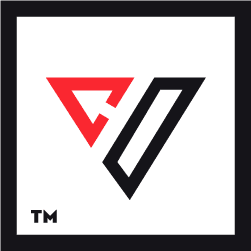

Essentially, branding is commonplace among business thought leaders. For example, many brands focus on external elements of a brand style guidelines putting aside key elements, such as a company’s mission and vision, culture, and competencies (internal aspects of a brand). While a brand logo, brand voice, color palette, and brand design are brand identities important elements, you should consider the internal aspects of your brand identity, such as brand values and brand personality.
Therefore, building a memorable brand identity is a process that starts within your company.
How do your employees perceive your company’s brand identity? Is there a sense of belonging among them?
Think about it: If a successful brand is loved by its target audience and hated by its employees. Would it be a coherent, solid brand?
Getting the audience and internal staff acceptance is a measurable and achievable goal. This can be done when putting enough effort into integrating a brand at all levels. It requires leadership, commitment, a lot of teamwork, and cutting-edge knowledge.
Let’s say it once and for all: a solid, strong brand is integrated at all levels. Not working on a brand style guide may cost money and opportunities you cannot afford.
What is brand identity?
In short, brand identity is defined as the visual elements of a brand, such as brand colors, brand design, and memorable logo, that make it stand out from competitors. At the same time, all the visual elements make it enduring in customers’ minds.
This concept is widely known, but there’s a problem.
According to Stephen Greyser and Mats Urde, Harvard and Lund University branding experts, companies are extremely good at defining their products but less sure-footed about consistent brand identity. So a well-defined brand identity requires more than a visual brand and slogans; it requires integrating a strong brand identity.
What is a strong brand identity?
A strong brand identity is a brand identity design integrated at all levels. As per Greyser and Urde, there are three elements of brand identity:
- The internal elements are the foundation of your brand: mission and vision (which engages and inspire your people), culture (which reveals your work ethic and attitudes), and competencies (your distinctive capabilities). These are rooted in the organization’s values and operational realities. In practice, these things are part of your brand ethos, and how your employees and customers perceive it.
- The external elements are related to how you’d like customers and other stakeholders to perceive your brand: value proposition, outside relationships, and positioning. Nike, in this case, wants to be known for helping customers achieve their personal best, a goal that shapes its product offerings and is captured in its marketing tagline, “Just Do It.” This is, by no means, a unique brand experience.
- Then comes elements bridging internal and external aspects: the organization’s personality, the distinctive communication methods, and the brand core —what it stands for and the enduring values that underlie its promise to customers. Remember that the brand core is the essence of a company’s identity.
Greyser declares that when a brand identity is coherent, all the brand elements will inform and echo the brand core, resonating with the company’s values and what the brand stands for. The brand core, in turn, will shape the other eight elements into a brand strategy.
Why is a brand identity design essential for your business development?
As per Greyser and Urde, a strong brand identity serves as a north star, providing directions and a sense of purpose. It can also enhance brand image, helps companies recruit human talent, and provide protection (brand voice) against reputational damage in times of trouble.
The branding process allows you to clarify your brand identity to your target audience and employees. A brand personality will distinguish you from others in a competitive market. Remember: a strong brand identity makes your business an excellent prospect for partnerships and a desirable company for candidates seeking jobs.
Internally, a solid brand helps your recruiting talent and will enhance the hiring process by prioritizing applicants who align with your brand core. On the other hand, once you have integrated your brand identity at all levels, it will gain a reputation among stakeholders, and, for sure, your leads will not resist the urge to reach out.
Ignoring the brand identity design increases the chances of self-sabotage and makes it unnecessarily difficult to employ professionals who can positively impact your business.
Although the benefits are exceptional, many people involved in the brand-build process struggle to articulate a coherent corporate brand identity.
How do companies like Coca-Cola build brand identity?
Greyser and Urde developed a tool named The corporate brand identity matrix. This instrument focuses on the company’s strengths and internal and external elements. All of them are related to the organization’s identity. It’s the product of 10 years of research and engagement with hundreds of senior executives in worldwide industries and across several sectors, including manufacturing, financial services, and nonprofits.
This helpful tool has helped build brand identities such as Volvo, the Nobel organization, Cargotech, and Bona.
In practice, the brand identity matrix is a questionnaire that comprehensively understands the organization’s why, revealing its brand personality and enhancing the visual brand, brand guidelines, web design, logo, and color palette.
We encourage you to do this exercise like other top brands.
If you consciously go through this questionnaire, you’ll dig deeper into how strong your brand identity is integrated. If not, you need to examine the weak links and explore how to strengthen them.
That’s why it is a powerful tool to build and leverage your branding.
Fill the questionnaire out, but MAKE SURE you follow these five guidelines provided by the specialist Stephen Greyser:
Be concise.
Think of the short phrases you use in your answers as headings, under which you will later write more-detailed descriptions fleshing out the brand’s identity and story. This may help your target customer make brand associations in the future.
Be straightforward.
Avoid jargon and keep your responses uncomplicated. Less is more.
Seek what is characteristic.
Capture words or concepts that resonate within your organization—that you’d agree signal “This is us.” A newly opened hotel in Oslo described its customer relationships like this: “We treat rock stars as guests; we treat guests as rock stars.”
Stay authentic.
Some elements of your identity may already be firmly rooted in your organization. Be careful to be honest in your expression of them. Some elements may be aspirational, calling for adaptation within the company if they are to ring true.
Seek what is timeless.
A brand identity should be lasting. Forward-looking but rooted in the past, it has stood the test of time.
With all this in mind, LET’S JUMP RIGHT INTO THE QUESTIONNAIRE!
The Corporate Brand Identity Matrix
External Elements Questions.
- The first question assesses your VALUE PROPOSITION.
Answer: What are our key offerings, and how do we want them to appeal to customers and other stakeholders?
- The second question evaluates your RELATIONSHIPS:
What should be the nature of our relationships with key customers and other stakeholders?
- The third question gauges your POSITION:
What is our intended position in the market and in the hearts and minds of key customers and other stakeholders?
Internal/External Elements Questions.
- This question will allow you to define your EXPRESSION.
Answer: What is distinctive about how we communicate and express ourselves and makes it possible to recognize us at a distance?
- The fifth question is one of the most significant because it is on your BRAND CORE.
BE THOUGHTFUL when trying to answer: What do we promise, and what are the core values that sum up what our brand stands for?
- Now we have a question on PERSONALITY:
What combination of human characteristics or qualities forms our corporate character?
Internal Elements questions.
- At Creatitive, we always encourage you to find your MISSION AND VISION, so be authentic and honest when answering:
What engages us (mission)? What is our direction and inspiration (vision)?
- Do you have corporate CULTURE? This question is an invitation to build it.
Answer: What are our attitudes, and how do we work and behave?
- Last but not least, you have to find your COMPETENCIES:
What are we particularly good at, and what makes us better than the competition?
As you can see, there’s a lot of work to do here. To answer all these questions, you must include your marketing team, high-hierarchy staff, such as executive offices and managers, and even your employees have room for this task. So, once you have answered these questions, analyze the coherence of your answers to the questions in the matrix.
As per Greyser and Mats Urde, this questionnaire helps create a narrative about your brand strategy, competitive approach, and the basis and nature of your external interactions and communications.
Analyze the Results
As you can see, there are four paths of the matrix, and the challenge consists of confirming that each element logically follows the one before it, regardless of which direction you’re moving.
According to Harvard experts: “The clearer and more logical your narrative is, the more stable the matrix is, and the stronger your corporate brand identity.”
Let’s go in-depth on each scenario:
The first diagonal path focuses on STRATEGY.
At this point, you should be able to order your answers as follows:
Our mission is
Our vision is
What we promise is
Our core values are
Our intended position in the market is
Read your answer and assess the coherence. In theory, you should be able to evaluate your corporate based on these questions:
Does your mission and vision engage and inspire people in your organization and, ideally, beyond it?
Do they translate into a promise that the organization will fulfill? Is that promise manifest in the company’s positioning?
Finally, evaluate in the other direction: Does your positioning resonate with your promise and values, which align with the corporate mission and vision?
The second diagonal path focuses on COMPETITION.
In this part, you should be able to order your answers as follows:
Our competences are
What we promise is
Our core values are
Our value proposition is
Read it, share it with your team, and evaluate: Do the items in the list above fit well together? Do your current competencies allow you to keep your promise and provide a solid basis for competitive and appealing value propositions?
The vertical path focuses on INTERACTION.
The same thought process for this axis. Ensure you can systematize the info as follows:
Our culture is
What we promise is
Our core values are
The kinds of relationships we strive for are
The Matrix helps you understand how your corporate interactions work. This section explains how well your organizational values and culture resonate with and engage people inside and outside your company.
Consider your employees an essential resource for ensuring the authenticity of the corporate brand. If they don’t embrace these elements of your corporate identity, your outside relationships are not as strong as you may think.
The horizontal path focuses on COMMUNICATION.
Make an effort to evaluate this part since strong communication is also vital for a brand identity. You should read it as the following:
Our communication style is
What we promise is
Our core values are.
Our corporate personality traits are
The specialist who designed this instrument has demonstrated that brand personality or character underpins the company’s brand core and is expressed in many ways, from product design and the architecture of the headquarters to the corporate logo and marketing taglines.
EVALUATE if that personality comes through in all internal and external communications.
Summary
Well, that’s a lot of good info to digest.
In summary, The Brand Identity Matrix encompasses all about your company. It’s a process that requires teamwork and many sessions, but at the end of the day, you’ll get a comprehensive understanding of your brand identity, including your brand image (key colors, identity, social media, mixed messages) and your brand’s personality.
Professor Greyers says, “Examining and refining your corporate brand is a true leadership task requiring far-reaching input and commitment, passion, and grit. The outcome—a sharpened brand, stronger relationships, and a unified organization—can provide a clear competitive edge.”







